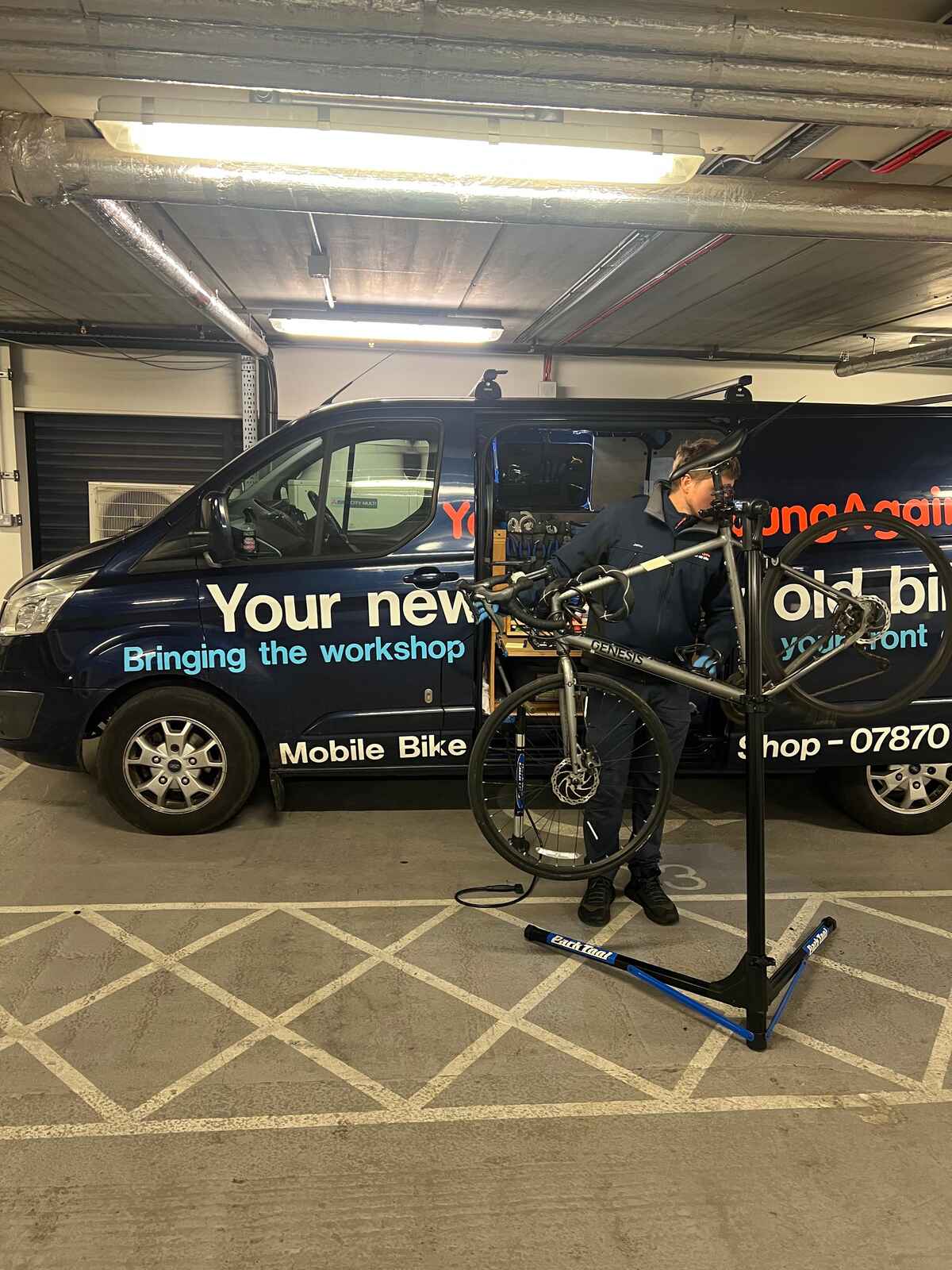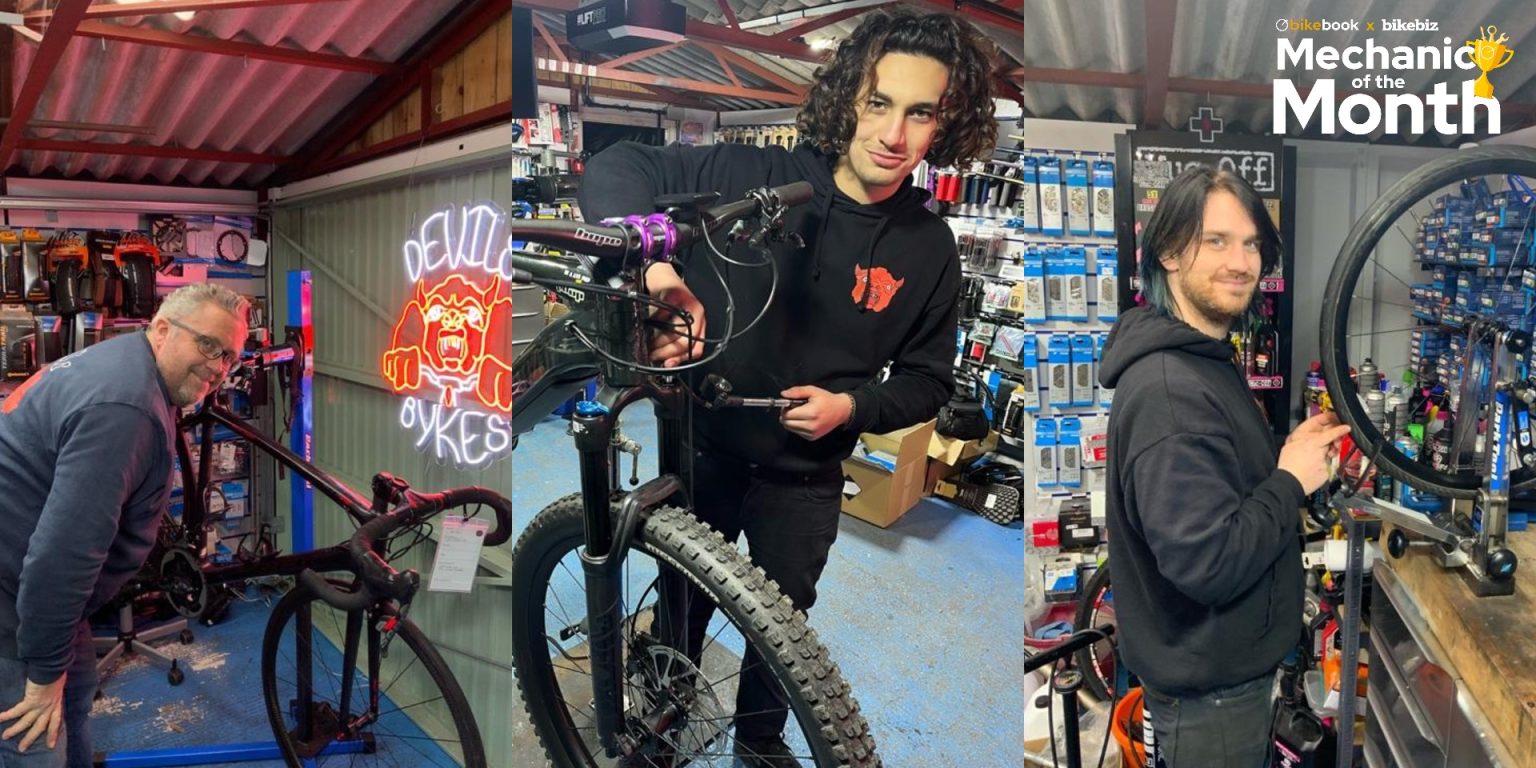December 21, 2025
•
7 minute read
How to Track Orders for Your Bike Shop
You’re a savvy bike shop owner, juggling online and in-store sales, and sometimes it feels like managing order tracking is like spinning too many plates at once.
Jake Fieldsend
Founder & CFO
You’re a savvy bike shop owner, juggling online and in-store sales, and sometimes it feels like managing order tracking is like spinning too many plates at once. Amid the hustle, drop-offs, and pick-ups, it’s easy to lose sight of the vital order that could define your customer’s experience. Leaving customers hanging with vague order statuses can lead to dissatisfaction and lost sales. What's the secret to keeping all those plates spinning smoothly without dropping any? Let's look at how implementing effective order tracking systems can streamline your operations and keep your customers happy.
1. Setting Up Order Tracking Systems
1.1 Choosing the Right Software
Selecting the right tracking software can make or break your order management process. You'll want something robust that seamlessly integrates into your existing setup without unnecessary complications or cost. Platforms like Xero or Bikebook's bike shop POS system are excellent because they’re comprehensive yet user-friendly. They offer unique features like real-time inventory tracking and auto-update capabilities, so you’re always in the loop about what each order entails.
When evaluating potential software, consider these essential questions:
- Can it integrate with your current e-commerce platform? Connect it with systems like Shopify or Saledock for a smoother workflow.
- Does it offer real-time updates? This ensures you and your customer are never in the dark about order statuses.
- How user-friendly is the interface for your team? Fast learning curve = fast implementation.
Pro-tip: Opt for a software that offers a free trial—test it in your actual work environment before committing (Bikebook offer a 28 day trial).
1.2 Integrating with Your Website
Your website is often the first touchpoint for your customers. Integrating order tracking software is not just beneficial; it’s vital. It transforms the customer experience from chaotic to clear-cut. With options like Saledock, you can directly link your order processing systems to your website, ensuring order data flows automatically from purchase through to fulfilment.
To integrate effectively:
- Ensure your e-commerce system and tracking software are compatible. Adjust as necessary to empower seamless data movement.
- Check for plugins or APIs which simplify integration tasks between your shop and your chosen order tracking tool.
- Prioritise a responsive design to ensure your tracking system is mobile-friendly. This guarantees customers can access order updates from any device.
Pro-tip: Test the integration by conducting a mock order to observe the complete tracking journey from a customer’s perspective.
1.3 Training Staff on the New System
Introducing new systems without proper staff training is like giving them a bicycle with no wheels. They’ll struggle and so will you, when productivity doesn't improve. Make training engaging and inclusive - empower your team by showing them how these new tools make their jobs easier.
Key training strategies:
- Schedule hands-on workshops. Let your staff try out the system in a no-pressure setting.
- Use visual guides and checklists that they can refer to during their daily tasks.
- Encourage feedback from team members on the new system. It can unveil unforeseen roadblocks or inspire tweaks that enhance usability.
Pro-tip: Appoint a tech-savvy team member as a ‘project champion’ to lead training sessions and support peers in mastering the system.
With these steps, you forge a path to smoother operations that ultimately charms your customers and strengthens their loyalty to your bike shop. Implement these insights today and watch both customer satisfaction and your shop's efficiency pedal swiftly upward!
2. How to Track Orders Using Workshop
2.1: Streamlining Your Bike Shop Operations with Workshop by Bikebook
Managing a bike shop involves juggling various tasks, from scheduling repairs to handling customer communications. Workshop by Bikebook the complete bike shop management software simplifies these processes, allowing you to focus on delivering exceptional service. Here's how it can enhance your operations:
- Centralised Communication: Integrate platforms like SMS, Email and facebook into a single inbox, ensuring seamless interactions with customers.
- Paperless Management: Transition to digital business reports, gain insights into seasonal trends, and streamline customer aftercare, reducing paperwork and administrative overhead.
- Automated Booking System: Implement a bespoke booking system tailored to your workshop's needs, whether you're a mobile mechanic, traditional shop, or offer collection and return services.
- Inventory Control: Monitor stock levels in real-time with automated alerts, ensuring you have the necessary parts without overstocking.
- Optimized Route Planning: For mobile services, utilize route optimization to minimize travel time and increase efficiency.
- Integrated Invoicing and Payments: Streamline financial processes by integrating invoices with your preferred payment and accounting systems, facilitating upfront payments and managing late fees.
By adopting Workshop by Bikebook, you can enhance efficiency, improve customer satisfaction, and focus more on what you do best- servicing bikes.
Pro-tip: Effective bike shop POS systems can save you time and generate you more revenue
2.2 Coordinating Pick-Up or Delivery
Once you've chosen your mechanic, coordinating pick-up or delivery is the next step, and Bikebook handles this seamlessly. The platform provides all the details necessary to ensure your bike reaches the mechanic safely and returns just as smoothly. Here’s how it works:
- Confirmation: After selecting a mechanic, confirm a suitable pick-up or delivery time via Bikebook.
- Flexibility: If pick-up isn’t feasible, opt for a mobile mechanic who can come to you.
- Communication: Stay in constant contact with your mechanic to track the bike in transit through Bikebook's messaging system.
Being able to juggle these logistics comfortably increases your satisfaction with the service. With this level of organisation, you avoid unforeseen problems and last-minute mix-ups.
Pro-tip: Communicate your preferred timings clearly to avoid delays. Mechanics appreciate precise information.
2.3 Monitoring Repair Status Online
With Bikebook, monitoring the repair status is straightforward and efficient. You can easily access real-time updates on the progress of your bike repair, minimising uncertainty and anxiety about potential delays. Here’s what to expect:
- Updates: Receive notifications at every stage of the repair process, from commencement to completion.
- Mechanic Feedback: Get direct feedback from your mechanic via the Bikebook platform.
- Completion Alerts: Be instantly informed when your bike is ready for collection or delivery.
This transparency not only enhances trust but also ensures you are never left wondering about the status of your order. Staying informed empowers you to plan around the service efficiently.
Pro-tip: Set up notification alerts on your mobile device to stay promptly updated without constant manual checking.
3. Improving Customer Satisfaction with Efficient Order Tracking
3.1 Offering Real-Time Updates
Timely and accurate updates are not just a luxury—they're a necessity. By ensuring real-time updates, you place customers squarely at the forefront of the purchase process. This means fewer calls to your store asking about order statuses. Offering instant updates can be achieved through automated notifications via SMS or email. Benefits include:
- Reduced anxiety for customers anxious about their deliveries.
- Proactive service, where you alert them about potential delays.
- Increased transparency, lending credibility to your service.
For a practical approach, anticipate your customer's needs. Send automatic reminders when delivery looms or the order has been dispatched. Let them know exactly where their bike comes from and when it'll arrive, reinforcing trust and reliability.
Pro-tip: Implement a predictive tracking tool that doesn't just follow up but offers your customers alternatives in case of delay, such as switching delivery dates or addressing locations directly through their notification link.
3.2 Handling Customer Inquiries Effectively
Every query is an opportunity to build trust and foster loyalty. Addressing customer inquiries promptly can transform a frustrated call into a satisfied repeat customer. Create a ticketing system that helps track each query from start to resolution.
Here's how it helps:
- Organizes issues to avoid repeat concerns.
- Tracks satisfaction by logging customer feedback post-resolution.
- Identifies patterns in inquiries to address systemic issues.
When responding to inquiries, opt for simple words and straightforward information. Avoid jargon. Replace generic templates with personalised responses, remembering that customers value being acknowledged by name and situation.
Pro-tip: Regularly update an FAQ section in your platform with answers based on frequent customer inquiries. It alleviates concern and empowers customers to find information immediately.
3.3 Gathering Feedback for Continuous Improvement
Never let a chance to learn slip by. Gathering feedback completes the information loop, allowing you to tailor services exactly to your customers' needs. Surveys sent post-purchase capture honest opinions. Consider:
- Encouraging open-ended answers for nuanced insights.
- Offering small incentives to increase response rates.
- Analysing patterns to identify specific areas for improvement.
Feedback isn’t just about obtaining good reviews. Use it to evolve your service and foresee needs. An effective tool is to map feedback trends against performance metrics, ensuring you're achieving continual improvement goals.
Pro-tip: Implement a 'Social Proof Wall' showcasing highlighted testimonials. It not only boosts your brand but dynamically reflects your commitment to customer-centric services.
The journey to customer satisfaction is ongoing and ever-evolving. By enhancing transparency with real-time updates, refining communication channels, and actively harnessing feedback, you're positioning your bike shop for improved customer loyalty and operational excellence.
Discover even more about enhancing your bike service experience by exploring Bikebook's bike shop management software on bikebook.co.uk/workshop to find the right local mechanic effortlessly.



